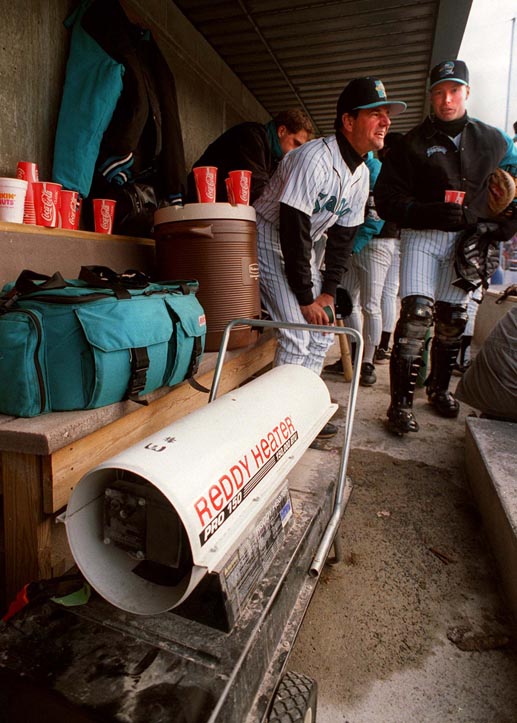It didn’t take long before the Sea Dogs became a winning franchise. Second-year Manager Carlos Tosca guided Portland to the best record in the Eastern League (86-56) and its first trip to the playoffs as the team won 26 more games than the previous season.
Gone was star catcher Charles Johnson, who had earned a big league job, but his position was filled by Mike Redmond, who finished the year batting .255 with 3 home runs and 39 RBI. Other key contributors included shortstop Edgar Renteria, who batted .289 with 7 home runs, 68 RBI, 30 steals and solid defense.
Outfielder Billy McMillon led the offense (.313, 14 home runs, and 93 RBI) and topped the league in hits with 162. Ralph Milliard (.267, 40 RBI), Pookie Wilson (.273, 44 RBI), and Lou Lucca (.276, 9 home runs, 64 RBI) all contributed both offensively and defensively.
Besides a solid offense, the Sea Dogs pitching staff was well constructed. Jay Powell had a microscopic ERA of 1.87 to go along with his 5-4 record and 24 saves. Bryan Ward posted an impressive 7-3 record with a 4.63 ERA, Will Cunnane was 9-2 with a 3.67 ERA, and Matt Whisenant led the team with 10 wins.
Antonio Alfonseca was also solid on the mound with a 9-3 record and a 3.64 ERA. Then on the final day of the season, Alfonseca blasted an unlikely home run that was still on the rise when it struck the light tower.
What was so rare? Because he was a pitcher with six fingers on each hand who was hitless in 15 at-bats (including 8 strikeouts) who hit that homer.
By winning the Northern Division, the Sea Dogs earned the right to face New Haven in the first round of the playoffs. Although the Sea Dogs were dominant during the regular season, the playoffs were a different story.
Portland lost the best-of-five series in four games.
And the fans continued to come out in record numbers, as an average crowd of 6,139 packed Hadlock Field.
Send questions/comments to the editors.



